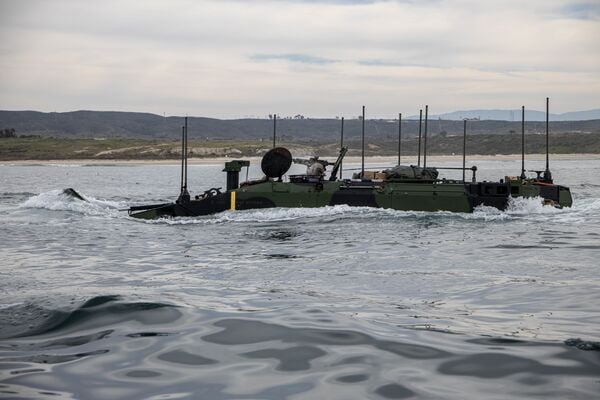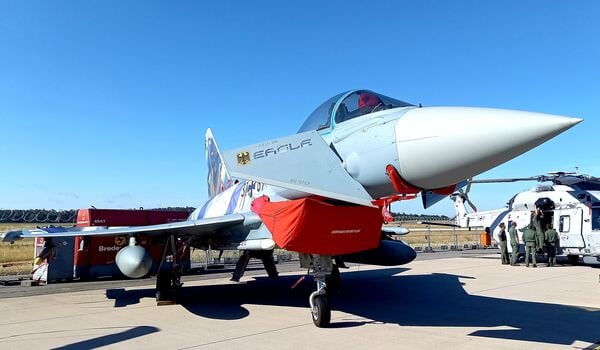- About
- Intara
- Capabilities
- Advisory
- Resources
- News
- Store
US Army seeking tube-launched, anti-armour UAVs
24 July 2023
by Zach Rosenberg & Meredith Roaten


A plethora of tube-launched UAVs, such as AeroVironment Switchblade (pictured above), have entered the market in recent years. These and other ‘suicide' UAVs are commonly used in the Russia-Ukraine conflict. (DVIDS)
On 7 July the US Army announced the May initiation of the Low Altitude Stalking and Strike Ordnance (LASSO) programme, intended to deliver a soldier-portable, tube-launched anti-tank unmanned aerial vehicle (UAV) to infantry brigades.
“The army is preparing to engage near-peer threats in a conventional conflict, [and] it was becoming evident that our Infantry Brigade Combat Teams (IBCTs) are in need of an additional organic anti-tank capability,” Lieutenant Colonel Aaron Pearsall, the army's product manager for soldier precision targeting devices, told Janes in a 21 July interview.
Although delivered to the IBCTs, Lt Col Pearsall said the army is “focused at giving that battalion commander the organic [LASSO] capability”, pushing the UAV's use down to smaller units.
The army intends to field the UAVs in mid-to-late 2024, Lt Col Pearsall said. The first LASSOs are to be existing, off-the-shelf products. The army is assessing available options and will make further decisions following an as-yet-unscheduled industry day.
USMC debuts amphibious vehicles in exercise with Philippine armed forces
06 May 2024
by Ridzwan Rahmat


A file image of a USMC ACV from 2022. The service marked its first employment of the ACV at an overseas exercise during ‘Balikatan' 2024 in the Philippines. (US Marine Corps)
The US Marine Corps (USMC) has marked the first employment of its amphibious combat vehicles (ACVs) in an overseas military exercise.
This milestone was accomplished on 4 May when ACVs from the 15th Marine Expeditionary Unit (MEU) splashed down into Oyster Bay on the Philippines' Palawan Island from US Navy (USN) landing ship dock USS Harpers Ferry.
It was done as part of the 2024 iteration of Exercise ‘Balikatan', a bilateral drill between the Armed Forces of the Philippines (AFP) and the US military.
As part of the amphibious manoeuvres, the ACV platoon organised itself into assault sections in the water after being launched from Harpers Ferry, the USMC said in a 4 May statement.
The vehicles then engaged multiple shore-based targets using their remote weapons systems to control externally mounted Mk 19 40 mm grenade machine guns.
These weapons were co-ordinated and fired simultaneously while afloat to maximise the effect against the targets at shore, the service added.
Chinese bomber launches new ballistic missile
03 May 2024
by Akhil Kadidal


China first unveiled the new ALBM in November 2022, during AirShow China 2022. At the time, the two missiles unveiled had a yellow stripe and a code signifying that they were training missiles (as shown in the image, in the top part of this graphic). Recent imagery shows the ALBM in a low-observable grey-blue colour scheme, indicating that the missile is progressing to production. (Janes/Gettyimages)
China's People's Liberation Army (PLA) has released a video showing a Xi'an H-6K strategic bomber launching a new ballistic missile in flight.
Imagery of the air-launched ballistic missile (ALBM) being dropped from the H-6K was included in an official PLA video released on 1 May. In the video, the new missile is dropped from the port side wing pylon of an H-6K. The missile, which has the tentative designation of KD-21, is not shown igniting its engine.
The new ALBM is potentially a hypersonic missile, similar to the Russian Kh‐47M2 Kinzhal (AS-24 ‘Killjoy'). Janes has previously assessed that the KD-21 ALBM is likely powered by a solid-propellant rocket engine. However, it is unclear if the KD-21 in the recent video was equipped with an engine.
Luftwaffe yet to decide on final Tornado replacement numbers
02 May 2024
by Gareth Jennings


A Luftwaffe Eurofighter on the flightline at the 2022 ILA Berlin Airshow. The service has told Janes that it does not yet know how many additional aircraft it will buy to replace the 90 Tornados being retired. (Janes/Gareth Jennings)
The German Luftwaffe has not yet determined how many new combat aircraft it is to acquire to replace its fleet of Panavia Tornados, a senior service official told Janes on 2 May.
Responding to a request for clarification and confirmation of the 85 new aircraft figure previously given by industry officials, Commanding General of Air Force Forces Command, Lieutenant General Günter Katz, said the Luftwaffe had never formally declared a one-for-one replacement of the Tornado, and that “a new target number does actually not exist”.
On 7 July the US Army announced the May initiation of the Low Altitude Stalking and Strike Ordnance ...
Latest Podcasts
Using OSINT to support law enforcement
Ritu Gill, Intelligence Analyst, joins Harry and Sean to discuss the practical use of OSINT to support law enforcement. Ritu discusses it’s use in supporting risk assessments and classified or closed sources of intelligence. She also discusses t...
Listen nowJanes Case Studies
Using Janes Intara to build a common intelligence picture: Russian build up on the Ukrainian border
View Case StudyNews Categories
 Air Details
Air Details